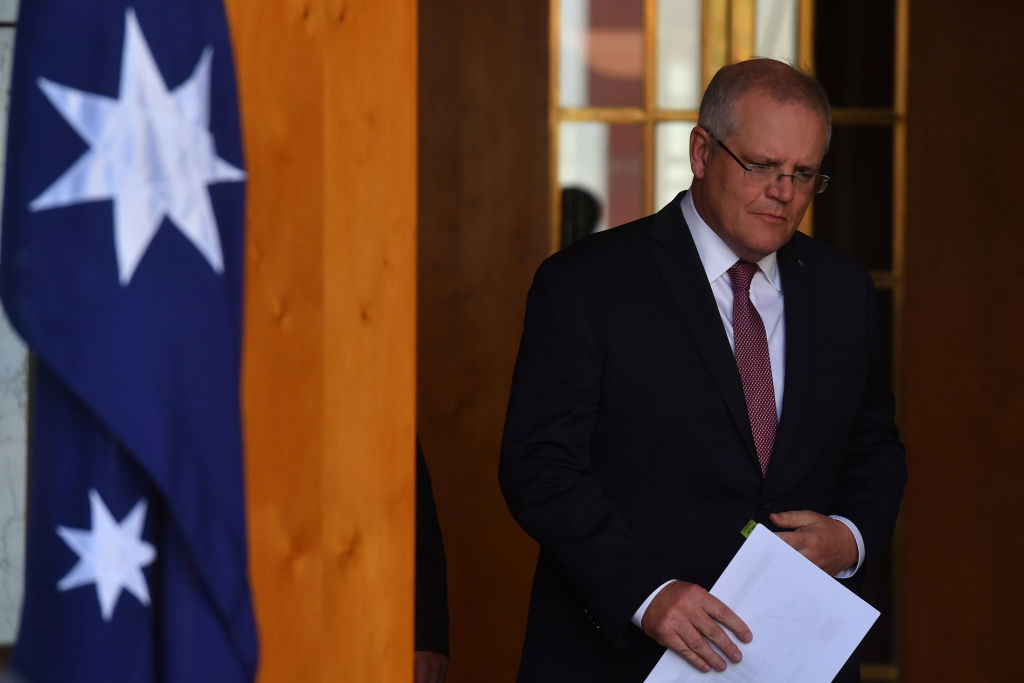
Last Friday’s announcement by Prime Minister Scott Morrison that Australia was ‘being targeted by a sophisticated state-based cyber actor’ puzzled some: why not name China, why not be specific about the attacks?
It’s the eternal challenge with intelligence matters. We don’t want our opponents to know how effectively we track them. Equally important though, the public must understand what the threat is and why cybersecurity is so vital.
As Beijing gets more assertive, our government must bring Australians further into its confidence on national security. It’s a time for clarity, not euphemisms about being ‘country agnostic’ when identifying threats.
Indeed, there is a good story to tell. Three important developments happened last Friday that received little attention but point to an emerging security strategy in which Australia will play a globally leading role.
First, Treasurer Josh Frydenberg hosted a call with his counterparts in the other Five Eyes nations— Canada, New Zealand, the United Kingdom and the United States—that mirrors the intelligence relationship at the core of Australian security since World War ll. Aligning policy among these countries on economic security is a substantial development. Foreign investment is a prime case in point. We are stronger if we share information and coordinate our approaches, encouraging investment from within the Five Eyes and including other democracies in our technology research, critical infrastructure and economy.
Second, Defence Minister Linda Reynolds participated in a meeting of NATO defence ministers on the geopolitical challenges presented by the coronavirus pandemic. Again, outside of discussions on Afghanistan, this is a first.
These developments show that the democracies are aligning. The pandemic provides the cover to discuss the biggest challenge to global stability—China under Xi Jinping.
Third, Reynolds announced the creation of a ‘defence intelligence enterprise’ to be led by a senior military chief of defence intelligence.
This is more than a bureaucratic restructure. The need is to strengthen the intelligence-collecting backbone of new multibillion-dollar equipment such as the F-35 fighters, air warfare destroyers, E/A-18 Growler electronic-warfare aircraft, submarines, and piloted and autonomous maritime surveillance aircraft.
In Defence, reorganising intelligence areas brings together a patchwork of dispersed army, navy and air force intelligence units working with the portfolio’s big agencies—the intelligence assessors in the Defence Intelligence Organisation, the Australian Geospatial-Intelligence Organisation providing satellite imagery, and the Australian Signals Directorate with its cyber skills.
Typically, single service units prioritise their service’s needs. Investment in intelligence systems for these units can be patchy as a result. These arrangements worked well when the intelligence needed by operational military personnel was more neatly divided among air, sea and land. But they are not suitable for the world of high-tech military gear that Defence has and will buy much more of in coming decades.
The gap that needs to be filled is in providing a system that takes advantage of the huge amount of electronic data that Defence is able to collect before and during a conflict. This is about creating a virtuous loop—where the needs of personnel are met by tailored intelligence data and where those personnel collect the raw data that the intelligence analysts need to provide support.
The terabytes of data that new ships, submarines and aircraft can collect requires a back-office enterprise that can handle data coming in at unprecedented volumes and speeds, and make use of it for everything from tactical operations to strategic-level decision-making by government.
A key change gives one person—the new chief of defence intelligence—clear authority over intelligence investments and training and staffing of intelligence functions, both civilian and military.
At the same time, the approach integrates effectively with the broader national intelligence community. Slowly, but at gathering pace, Australia’s intelligence system is moving from agencies working in silos towards a shared, integrated enterprise. This is a welcome development.
Inside the Australian Signals Directorate, it seems the relatively new position of military principal deputy director-general, which was about ensuring the newly independent statutory agency continued to be closely connected to the military and its requirements, now reverts to a more junior role, probably a bit too early into the experiment to know its success. Over time, though, ASD’s technology investments will need to align more and more with the big Defence intelligence enterprise being created. That’s a future tango for power and resources that will be interesting to watch.
The intelligence that Defence collects is not only useful for wartime commanders and operational units. It’s also crucial for decision-makers from the cabinet room down. So, getting the innards of the Defence intelligence machine working is vital to ensuring national security as well as providing information for military operators.
On Tuesday, Reynolds convened what is intended to be a regular virtual meeting of Five Eyes defence ministers. Again, this is new and shows that Australia isn’t just being passively predated upon by China. Nationally and internationally, we are shaping responses that will toughen our capabilities as we face down the biggest strategic challenge to democracy since the fall of the Soviet Union.

